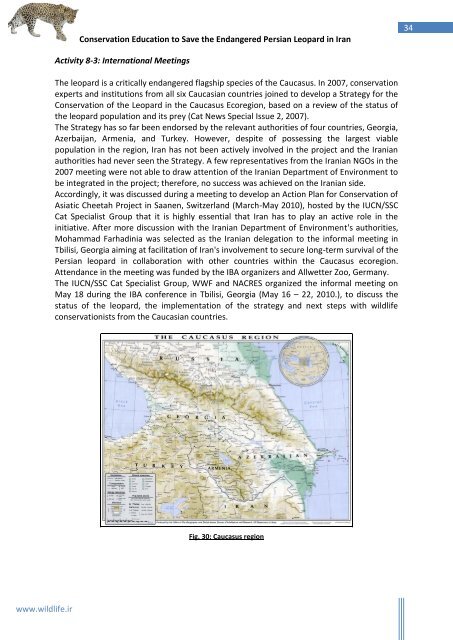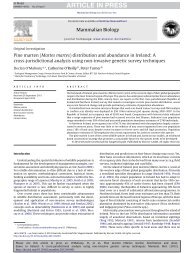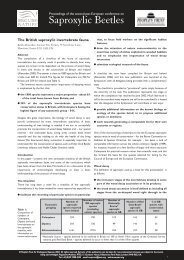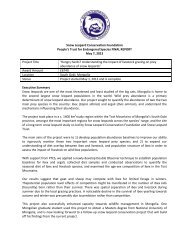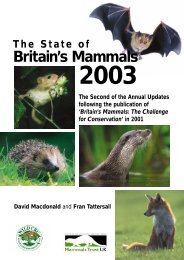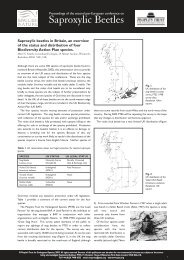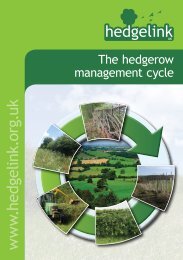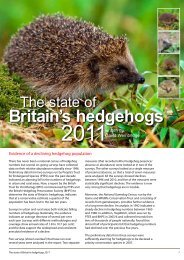Conservation Education to Save the Endangered Persian Leopard
Conservation Education to Save the Endangered Persian Leopard
Conservation Education to Save the Endangered Persian Leopard
You also want an ePaper? Increase the reach of your titles
YUMPU automatically turns print PDFs into web optimized ePapers that Google loves.
<strong>Conservation</strong> <strong>Education</strong> <strong>to</strong> <strong>Save</strong> <strong>the</strong> <strong>Endangered</strong> <strong>Persian</strong> <strong>Leopard</strong> in Iran<br />
34<br />
Activity 8-3: International Meetings<br />
The leopard is a critically endangered flagship species of <strong>the</strong> Caucasus. In 2007, conservation<br />
experts and institutions from all six Caucasian countries joined <strong>to</strong> develop a Strategy for <strong>the</strong><br />
<strong>Conservation</strong> of <strong>the</strong> <strong>Leopard</strong> in <strong>the</strong> Caucasus Ecoregion, based on a review of <strong>the</strong> status of<br />
<strong>the</strong> leopard population and its prey (Cat News Special Issue 2, 2007).<br />
The Strategy has so far been endorsed by <strong>the</strong> relevant authorities of four countries, Georgia,<br />
Azerbaijan, Armenia, and Turkey. However, despite of possessing <strong>the</strong> largest viable<br />
population in <strong>the</strong> region, Iran has not been actively involved in <strong>the</strong> project and <strong>the</strong> Iranian<br />
authorities had never seen <strong>the</strong> Strategy. A few representatives from <strong>the</strong> Iranian NGOs in <strong>the</strong><br />
2007 meeting were not able <strong>to</strong> draw attention of <strong>the</strong> Iranian Department of Environment <strong>to</strong><br />
be integrated in <strong>the</strong> project; <strong>the</strong>refore, no success was achieved on <strong>the</strong> Iranian side.<br />
Accordingly, it was discussed during a meeting <strong>to</strong> develop an Action Plan for <strong>Conservation</strong> of<br />
Asiatic Cheetah Project in Saanen, Switzerland (March-May 2010), hosted by <strong>the</strong> IUCN/SSC<br />
Cat Specialist Group that it is highly essential that Iran has <strong>to</strong> play an active role in <strong>the</strong><br />
initiative. After more discussion with <strong>the</strong> Iranian Department of Environment's authorities,<br />
Mohammad Farhadinia was selected as <strong>the</strong> Iranian delegation <strong>to</strong> <strong>the</strong> informal meeting in<br />
Tbilisi, Georgia aiming at facilitation of Iran's involvement <strong>to</strong> secure long-term survival of <strong>the</strong><br />
<strong>Persian</strong> leopard in collaboration with o<strong>the</strong>r countries within <strong>the</strong> Caucasus ecoregion.<br />
Attendance in <strong>the</strong> meeting was funded by <strong>the</strong> IBA organizers and Allwetter Zoo, Germany.<br />
The IUCN/SSC Cat Specialist Group, WWF and NACRES organized <strong>the</strong> informal meeting on<br />
May 18 during <strong>the</strong> IBA conference in Tbilisi, Georgia (May 16 – 22, 2010.), <strong>to</strong> discuss <strong>the</strong><br />
status of <strong>the</strong> leopard, <strong>the</strong> implementation of <strong>the</strong> strategy and next steps with wildlife<br />
conservationists from <strong>the</strong> Caucasian countries.<br />
Fig. 30: Caucasus region<br />
www.wildlife.ir


